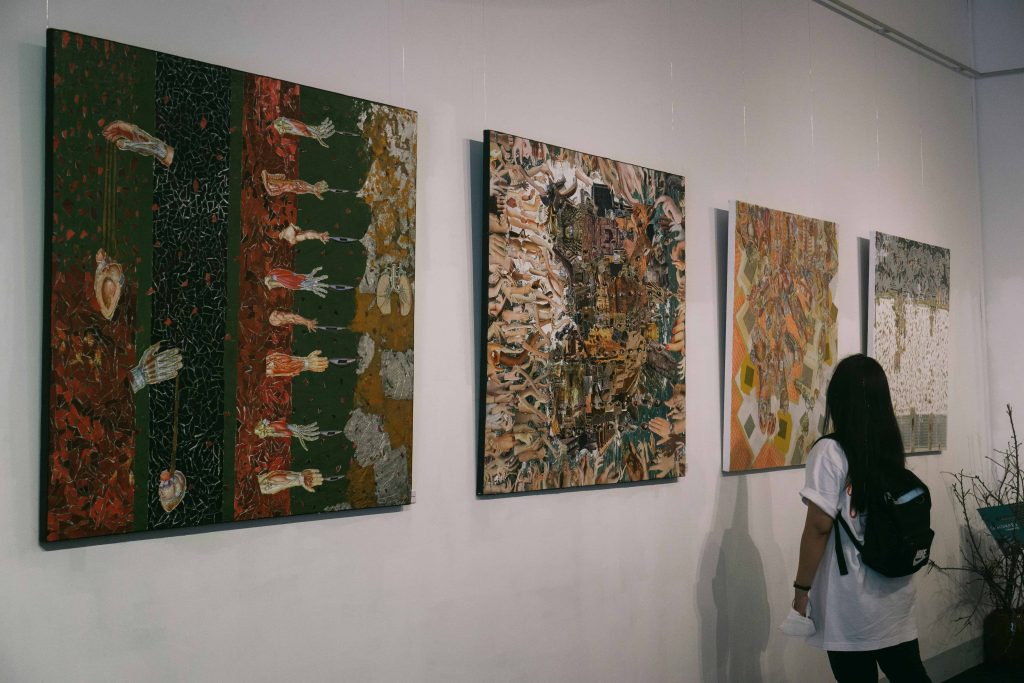
28 Apr How Community Art Projects Spark Social Change and Empower Voices
Community Art and Social Change
Community art has long been recognized as a powerful tool for social change, transcending traditional boundaries of artistic practice to engage directly with communities in ways that foster dialogue, solidarity, and activism. It creates spaces for collective identity and offers opportunities for marginalized voices to be heard. At its core, community art projects provide platforms for individuals to collaborate in the creation of art that reflects their lived experiences, challenges societal norms, and drives social transformation. This article explores the potential of community art in promoting social change, examining its theoretical framework, mechanisms of transformation, challenges, and best practices for effective implementation.
The Theoretical Framework
The role of community art in driving social change can be understood through various social theories, such as collective action, symbolic interactionism, and critical theory. Collective action theory highlights the importance of shared goals and group mobilization, which aligns with community art’s capacity to unite people around common causes. When community members come together to create art, they not only engage in creative expression but also contribute to collective movements that aim to address social issues. Similarly, symbolic interactionism explains how art functions as a medium through which meaning is created and shared among individuals. Through art, communities are able to reframe social issues, making them more accessible and emotionally resonant. Moreover, critical theory underscores the importance of art as a form of resistance against power structures, offering counter-narratives that challenge the dominant ideologies and practices of society. Community art thus plays a significant role in empowering individuals and fostering alternative visions of the future.
Mechanisms of Social Change Through Community Art
Community art projects function as catalysts for social change by fostering dialogue, building social cohesion, raising awareness, and empowering marginalized voices. One of the most significant ways in which art drives social change is through its ability to foster dialogue and civic engagement. By creating spaces for conversation, community art projects allow individuals to express their thoughts, concerns, and ideas in ways that are both creative and participatory. These spaces for dialogue encourage broader participation in civic life, making the process of social change more inclusive and accessible.
Furthermore, community art is essential in building social cohesion and strengthening community bonds. Collaborative art projects often bring together individuals from diverse backgrounds, fostering a sense of belonging and mutual respect. By engaging in a shared creative process, participants develop stronger social ties and a greater sense of solidarity. Art also plays a key role in raising awareness about social issues. Through public art, murals, and performances, artists are able to bring attention to topics such as inequality, climate change, and human rights. This visual and performative activism has the power to reach a wide audience and spark conversations that might otherwise remain marginalized.
Another powerful mechanism of community art is its ability to empower marginalized voices. For underrepresented groups, art offers a platform to share their stories and perspectives, challenging dominant narratives that have historically excluded them. This amplification of marginalized voices can play a transformative role in shifting public perceptions and fostering greater inclusivity. Additionally, community art can be used as a tool for healing and reconciliation in post-conflict settings. By providing an outlet for emotional expression, art helps communities address trauma and promote social healing, thereby facilitating reconciliation and rebuilding trust.
Challenges and Considerations
Despite its transformative potential, community art is not without its challenges. One of the primary issues is accessibility. Many community art projects struggle to reach all members of a community, particularly those who face cultural, economic, or physical barriers. Ensuring that all individuals, regardless of background or ability, can participate in these projects is crucial for their success. Additionally, the potential for co-optation and misrepresentation of community art must be carefully managed. As art becomes increasingly commodified, there is a risk that it may be co-opted by commercial interests or used as a tool to further agendas that do not align with the community’s needs. This highlights the importance of ethical considerations in community art projects. Ensuring community ownership of the artistic process and outcome is essential to maintaining authenticity and preventing exploitation.
Furthermore, community art projects often face significant funding and resource challenges. Many of these initiatives rely on grants, donations, or volunteer labor, which can make it difficult to sustain long-term projects. Securing adequate funding is crucial to ensure that community art can continue to have a lasting impact. Additionally, it is important to consider the cultural context and local dynamics when planning a community art project. What works in one community may not be suitable for another, and it is essential to respect the unique values, customs, and needs of each group.
Best Practices and Principles for Effective Community Art Projects
To maximize the impact of community art, certain best practices and principles should be followed. Community-led and participatory approaches are key to the success of these projects. When community members are involved from the very beginning, they are more likely to feel ownership over the project and contribute to its success. This participatory approach ensures that the art created is meaningful and relevant to the community’s needs. Collaboration with local organizations, activists, and institutions is also crucial for fostering support and ensuring the project’s relevance to the broader social context.
In addition to participation, sustainability is an important principle for effective community art. This involves not only securing resources but also ensuring that the project can continue to have a lasting impact after the initial art creation phase. Reflection and evaluation are also vital to understanding the effectiveness of community art projects. Regular feedback from participants can help refine the project and ensure it meets its goals. Lastly, it is important to prioritize respect for cultural diversity and local context. Community art must be sensitive to the specific values and traditions of the group it seeks to engage, ensuring that it is both inclusive and appropriate.

Conclusion
In conclusion, community art has the potential to drive significant social change by fostering dialogue, building social cohesion, raising awareness, and empowering marginalized voices. Theories such as collective action, symbolic interactionism, and critical theory provide a useful framework for understanding the role of art in social transformation. However, there are challenges to be navigated, such as accessibility, co-optation, and resource constraints. By following best practices such as community-led approaches, fostering collaboration, and ensuring sustainability, community art can have a lasting and positive impact on society. As we move forward, it is essential to continue exploring how community art can be utilized to create more just, inclusive, and equitable communities. Ultimately, community art is not just about creating beautiful works of art—it is about creating spaces for social change, healing, and empowerment.
Key Takeaways
- Community Art as a Tool for Social Change: Community art empowers marginalized voices, fosters dialogue, and unites communities for collective action, driving social transformation.
- Theoretical Frameworks: The impact of community art can be understood through collective action, symbolic interactionism, and critical theory, which highlight the role of art in resistance, identity-building, and reframing social issues.
- Mechanisms of Social Change: Community art encourages civic engagement, builds social cohesion, raises awareness on critical issues, and provides a platform for underrepresented groups to share their stories.
- Challenges in Community Art: Accessibility, co-optation by commercial interests, and resource limitations can hinder the success of community art projects, making ethical and inclusive practices essential.
- Best Practices for Success: Key principles include community-led approaches, collaboration, sustainability, and sensitivity to local cultural contexts to ensure the project remains relevant and impactful.
- Conclusion: Community art plays a crucial role in promoting social justice and inclusivity, and by overcoming challenges and applying best practices, it can continue to be a powerful force for positive change.
FAQs
How do community art projects contribute to social change?
Community art projects promote social change by fostering dialogue, building social cohesion, raising awareness about key issues, and amplifying marginalized voices. They create spaces where individuals can collaborate, express their concerns, and address societal challenges, often inspiring collective action and transformation.
What challenges do community art projects face?
Community art projects encounter challenges like accessibility barriers, potential co-optation for commercial purposes, and difficulties securing funding. Ensuring inclusivity, ethical participation, and sustainability while addressing the unique needs of each community is essential for their long-term impact.
What are the best practices for successful community art projects?
Successful community art projects prioritize participatory and community-led approaches, ensure sustainability, and respect cultural diversity. Collaboration with local organizations and regular reflection and evaluation from participants help maintain the project’s relevance and effectiveness, ensuring it addresses the community’s specific needs.
Unlock the secrets behind creating captivating virtual art tours—discover how the art of narration and storytelling can transform a simple viewing experience into a rich, immersive journey that resonates with your audience on a deeper level.



